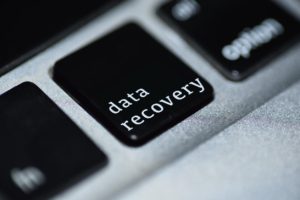Every business needs to be properly prepared for anything these days, including disasters. There will be plenty on the line for your business if a disaster strikes. If a disaster does strike, you could lose sensitive data that you may not be able to get back. If a disaster does strike, will your business be ready to handle a data loss incident?
People from all parts of the world have made their resolution as the new year was set to begin. One of the best ways your business can enter into the new year is to have an effective and efficient Backup and Disaster Recovery(BDR) plan that will greatly minimize any downtime and keep your business safe from any events that you cannot control. We want to help you create a BDR plan that will meet all of your business’s needs.
An Effective BDR Plan
Many small business owners do not always understand how valuable their business data is, but it is a very valuable asset to the business. This is why it is so important that you are able to protect your business data at all times. One of the best ways to do this is to find a BDR solution that will provide you with the tools and resources you need to restore your data. In addition, all of your data will not be created equally. You will find that some of your data will have a high value and others will not. If you want to build an effective strategy that will protect your business from any unfortunate data loss, we recommend that you sort through your data so you can determine what data you will need at all times and what data may not be as useful as the others.
Improving Your BDR This Year
We know that everyone wants to strive for better each year, and it should be no different when you have a business. Implementing an effective Backup and Disaster Recovery Plan this year is a great way for your business to improve this year. We know it can seem like a daunting task when it is time to implement the strategies that fit your business, but we recommend that you try some of the following guidelines and suggestions:
- Make sure you are communicating with your IT team to plan the right recovery strategy for your business. You will need to have a plan that will fully outline your goals, missions, and objectives.
- Find the right Backup and Disaster Recovery(BDR) platform that will give you every opportunity to back up your data without having long wait times and downtimes.
- When you find the right platform and implement your platform, we encourage you to test your backup on a regular basis. When you regularly test your backup plan, you will be able to determine its efficiency and effectiveness. With a regular test, you will have the assurance you need in knowing that your BDR plan will be ready to roll when you need it.
Every year, small businesses, mid-size businesses, and large businesses are hit with threats, malware attacks, viruses, natural disasters, and more. Also, some businesses lose data due to a human mistake. Unfortunately, many of these businesses do not have the proper Backup and Disaster Recovery(BDR) plan, which will result in a significant amount of downtime as the business tries to recover its data.
We know the new year has just started and you have so many things on your plate already, but we encourage you to make room for BDR. We want to make sure your business’s data is available at all times, even when disaster strikes. For more information on our Backup and Disaster Recovery(BDR) solutions, please do not hesitate to contact us today.



